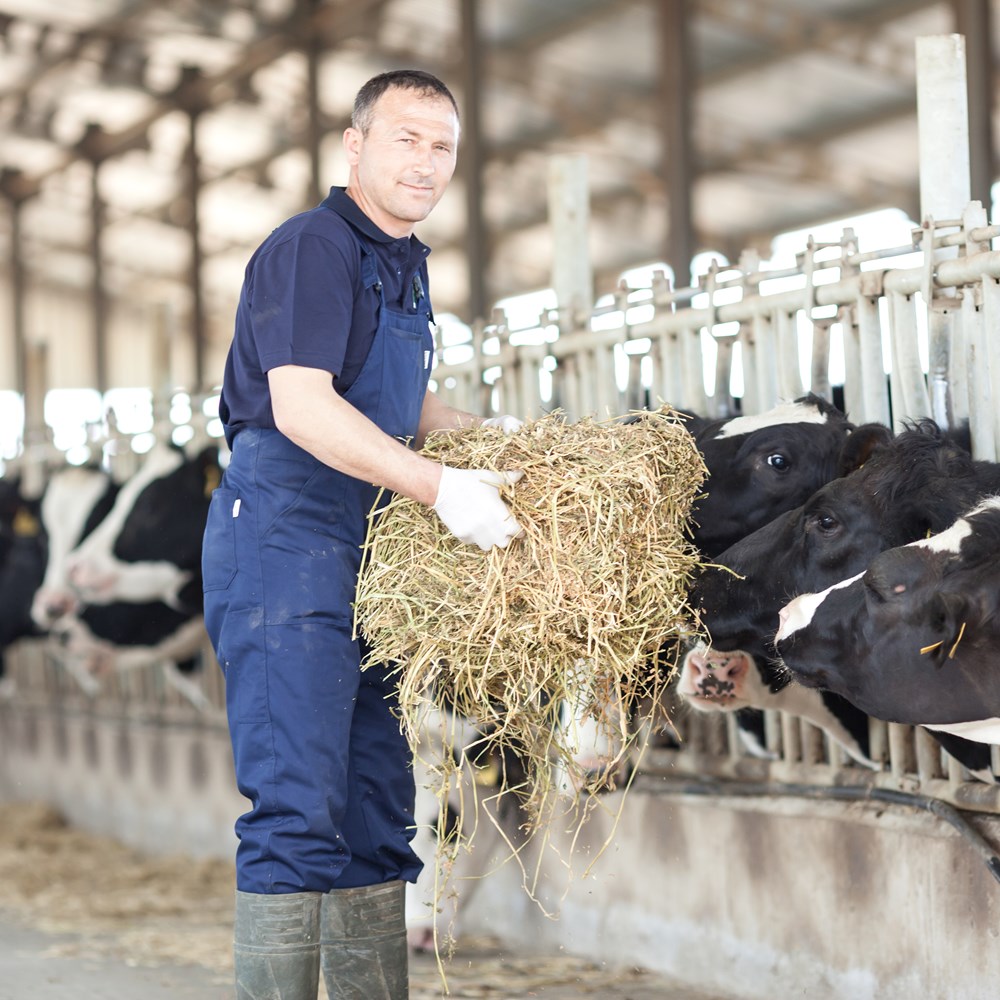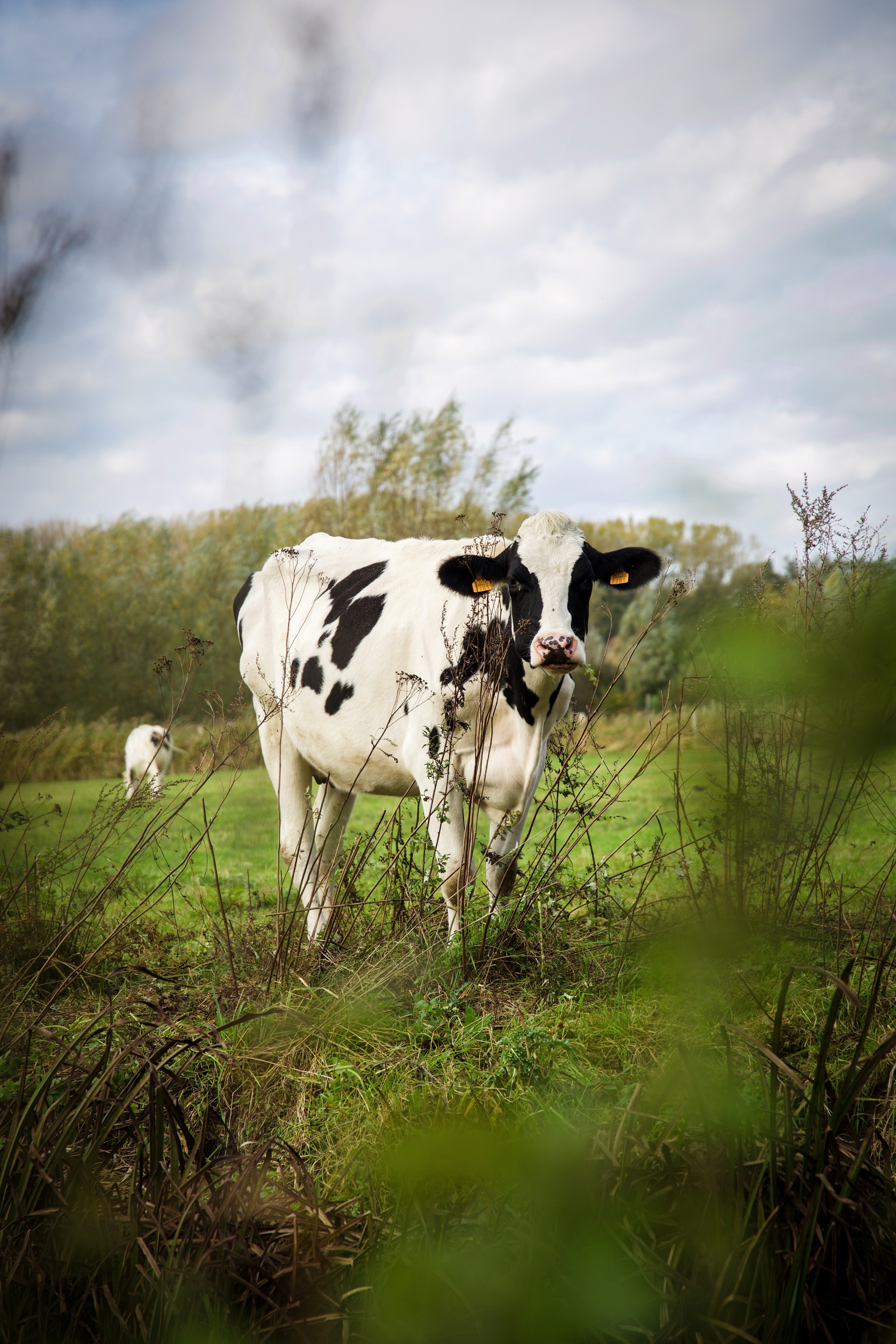Feeding by-products
What are the effects of a by-product system on the dairy herd?

The challenge
Increasingly, demands on land for human food production and energy crops will mean that dairy farming has to use land for grazing which cannot be cultivated, or rely more heavily on feeds not normally eaten by humans.

The research
A long-term study at SRUC, funded by the Scottish Government, compares the effects of contrasting management systems on cows of different genetic merit from the pedigree Langhill herd.
The by-product system ration consists of a concentrate blend (biscuit meal, sugar beet pulp, breakfast cereal, wheat distillers dark grains, Hipro soya bean meal, chopped straw, whole crop wheat, protected fat (Megalac), liquid whey permeate and minerals.
In addition, 5 litres of water per cow per day are added to the mix to bring the dry matter down to about 50%.
The cows are milked three times per day and continuously housed. Individual feed intake is recorded. Detailed data on animal performance, behaviour, fertility and health are also being measured.
The results
Satisfactory intakes and production can be achieved from a ration based solely on by-products without any direct requirement for land. Milk quality was low, especially for cows at average UK genetic merit for fat and protein production.
|
Year: 2015/16 |
Yield (kg/cow) |
Fat (%) |
Protein (%) |
Calving Interval (days) |
|
By-product select* |
10,274 |
3.88 |
3.25 |
407 |
|
By-product control* |
8,735 |
3.48 |
3.05 |
420 |
Recent published papers from this study include work on the link between body condition score and lameness, development of new hoof trimming advice and whole system data analysis.
By-product feed costs are highly sensitive to their availability. Variability of quality can also be an issue.
Purchased feed costs (excluding straw) are estimated at between 11.9 and 12.3ppl (2015/16) respectively for select and control lines*
* 'select' genetic lines are females of top 5% genetic merit, based on milk solids;
* 'control' genetic lines are females of average genetic merit.
The impact
The system is not intended as a blueprint but to provide producers and policymakers with data on alternatives to consider for integration into existing systems.
Related content

Dairy Research and Innovation Centre

